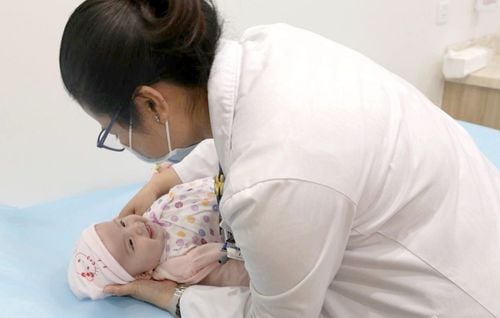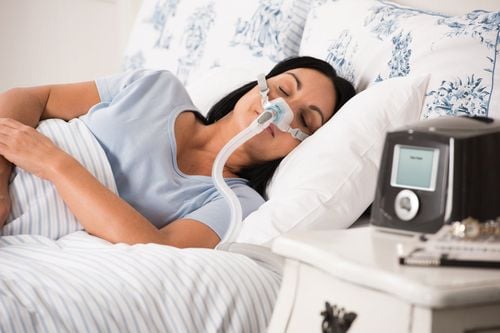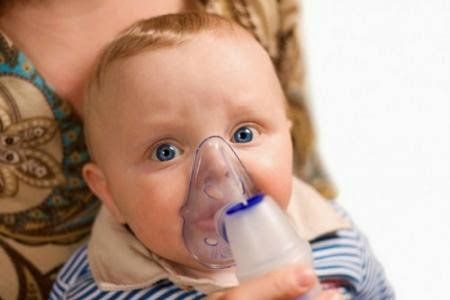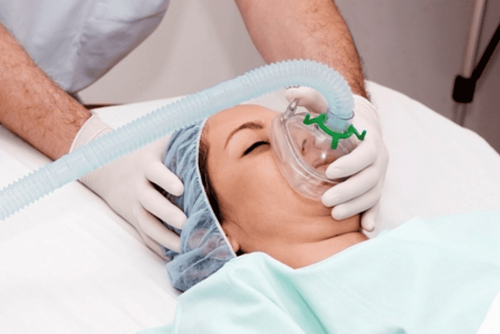This is an automatically translated article.
The article is professionally consulted by Master, Doctor Tong Van Hoan - Emergency Medicine Doctor - Emergency Department - Vinmec Danang International Hospital. Doctor with 10 years of experience in the field of Emergency Resuscitation.Standard ventilators used in intensive care units provide optimal lung ventilation. However, this device is not suitable for transporting patients requiring mechanical ventilation due to its large size and need for oxygen and compressed air systems. At this time, a portable ventilator is the perfect choice for patients who need mechanical ventilation.
1. What is a portable ventilator?
Our bodies cannot live without the oxygen that is inhaled from the air. But if someone has a medical condition that reduces oxygen intake (lung disease, cardiovascular disease, neuromuscular disease...) that prevents the body from getting enough oxygen. That can make breathing difficult and cause problems with the heart, brain, and other parts of the body. At this time, a ventilator is an essential respiratory support measure for these patients.A standard ventilator is a sophisticated device used in intensive care units. The principle of operation of the machine is to provide the most optimal lung ventilation. They incorporate precise pneumatic components but are large in size and require power supply.
However, when transporting patients requiring mechanical ventilation, these devices are rarely suitable because of their size, weight, power source requirements, and rate of gas consumption. For this reason, portable ventilators have been researched and released.
Hand-held ventilators are compact devices designed to provide mechanical ventilation in settings where air ducting and power are not available. Modern techniques have made this device accessible to conventional intensive care ventilators.
The most basic requirements of a portable ventilator include an oxygen supply and a battery, the machine must be light, but powerful, and can operate in a low-maintenance operating environment. Economical use of energy, simple operation, yet providing a wide range of efficient ventilation modes.
2. Application of portable ventilator

A single device may not be ideal for all situations, so there are different types of portable ventilators. But portable ventilators still have the same basic characteristics, which are basic features including gas supply, energy used to operate and assisted ventilation modes.
Portable mini oxygen ventilators are used in the following cases:
Transporting patients from the accident site to the hospital. Transfer patients between health care facilities (inside or outside the hospital). Ventilation at home, at this time portable ventilator can be called home ventilator, personal ventilator. Use in intensive care facilities set up to handle special cases such as field hospitals.
3. Who needs a portable ventilator?

Patients who have breathing problems that make it difficult to breathe, can't breathe, or can't breathe but cannot provide enough oxygen to the body will need to use a ventilator.
However, these patients are not always able to use a standard ventilator, and in some specific cases a portable ventilator is the optimal choice for patients experiencing the following problems here:
Asthma Chronic bronchitis Congestive heart failure COPD (chronic obstructive pulmonary disease): it is one of the fastest causes of death worldwide. In the next 20 - 30 years, this disease could become the 3rd or even 2nd leading cause of death. Cystic fibrosis Emphysema Pneumonia Pulmonary fibrosis Lung cancer Sleep apnea
4. Types of portable ventilators
Mechanical ventilation requires a portable ventilator to use energy to promote inspiratory air flow and to run systems that regulate the respiratory cycle. Based on the operating power supply, portable ventilators are divided into two categories:Portable air-powered ventilators: use compressed air energy to provide these functions. Microprocessor controlled ventilator: this type of machine uses electrical energy to regulate the respiratory cycle but the respiratory flow can be controlled by compressed air or by an electric compressor. Thanks to the advancement of science and technology, portable ventilators are designed with most respiratory support modes.
5. Devices that come with a portable ventilator
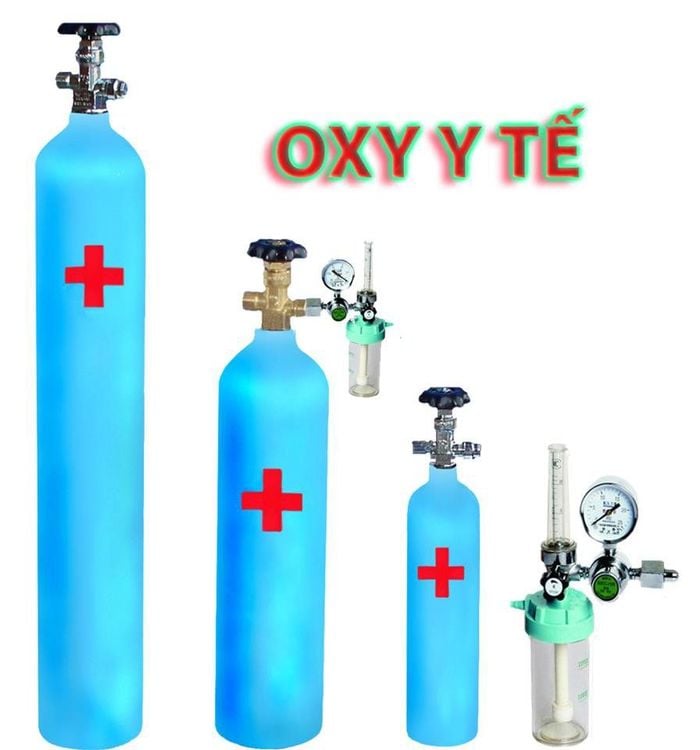
Oxygen supply: sufficient oxygen is required to meet the patient's needs, it is also used to provide a background rate of air flow through breathing or to control the ventilator cycle itself. During transportation, critical care, oxygen is usually provided from oxygen cylinders.
Ventilators incorporating air compressors can use different low pressure oxygen sources to use ambient air. Oxygen concentrators can be used if there is a problem with oxygen supply, or in field hospitals that do not have their own oxygen supply such as in hospitals.
The ability to control oxygen levels allows for a balance between the patient's oxygen demand and consumption with the side effects of oxygen levels. The oxygen concentration when using a portable ventilator is mainly selected by the operator
An artificial airway (such as an endotracheal tube) or a breathing mask to connect the ventilator to the patient's airway. Hand-held ventilators need to be operated by medical staff, the amount of oxygen provided must be according to the doctor's prescription. In cases where the patient uses a ventilator at home, it is necessary to follow the doctor's instructions and be carefully guided by medical staff.
Please dial HOTLINE for more information or register for an appointment HERE. Download MyVinmec app to make appointments faster and to manage your bookings easily.






